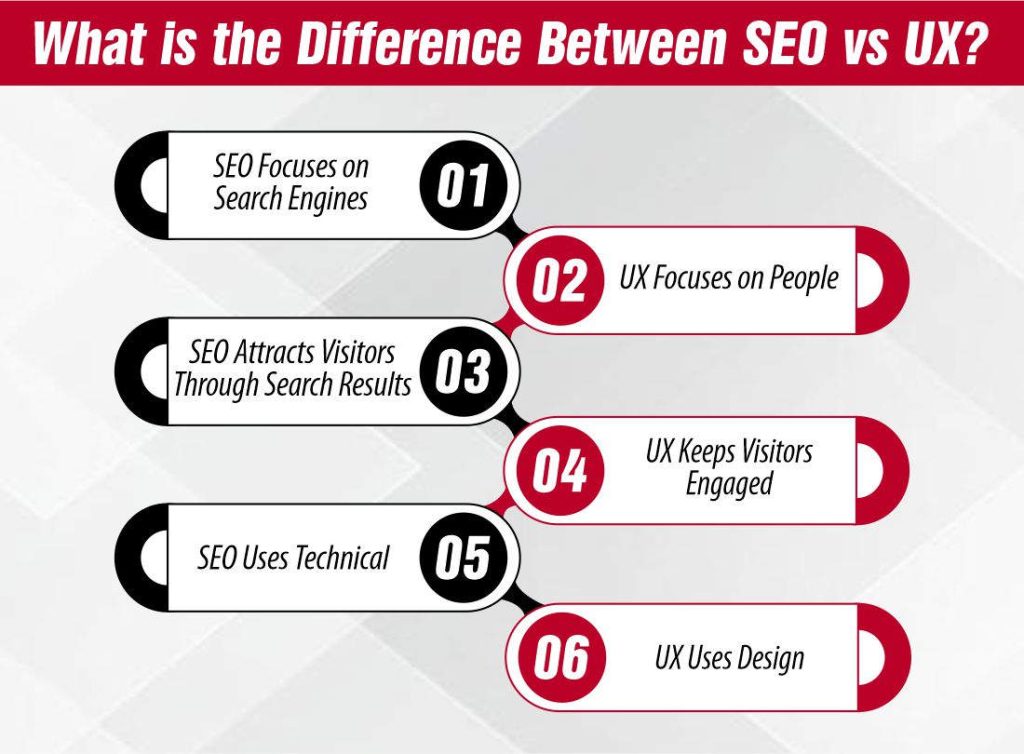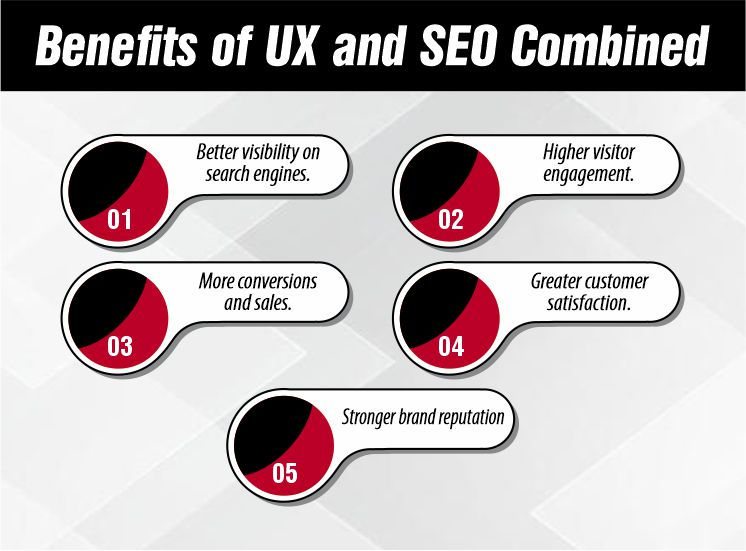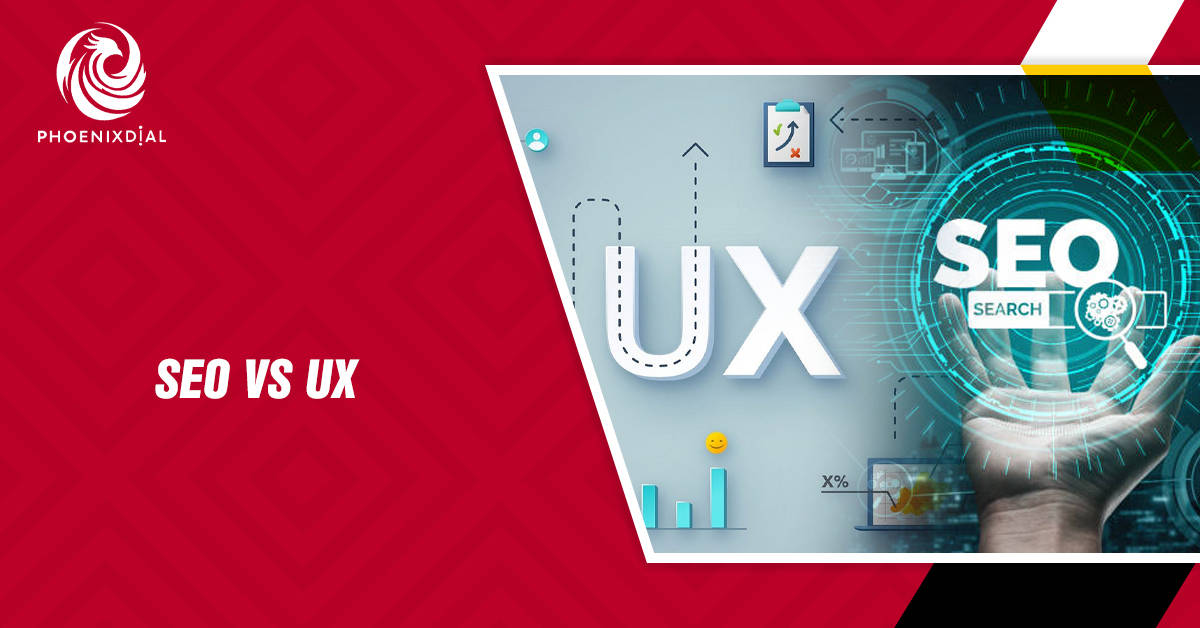Did you know that over 90% of online experiences begin with a search engine, yet most visitors leave a website if it takes longer than three seconds to load? That means your site could attract plenty of traffic but still lose potential customers before they even explore what you offer.
Many businesses invest time and money in SEO to rank higher but overlook how visitors actually experience their website. When your pages load slowly, navigation feels confusing, or design looks outdated, people leave — even if your site appears at the top of Google. This imbalance between SEO and UX creates a disconnect that affects both search visibility and user trust.
At Phoenix Dial, we understand that success online isn’t just about getting clicks — it’s about keeping people engaged. Our team of SEO and UX specialists works together to build websites that perform well on search engines and deliver a seamless, enjoyable experience for users. From technical optimization to design flow, we make sure your site feels fast, easy, and worth exploring. This is where search engine optimization and user experience meet for lasting results.
Table of Contents
ToggleIn this post, we’ll break down the difference between SEO vs UX, explain why both are vital for your digital growth, and show you how blending them can make your website stronger, smarter, and more successful.
Start Growing Your Business Today
Get a free, personalized quote via WhatsApp for your business. No pressure—just smart solutions tailored to your goals.
What is SEO?
SEO, or Search Engine Optimization, is the process of improving your website so it appears higher on search engines like Google. When someone searches for something you offer, SEO helps your website show up in those results. It’s about making your site easy for both people and search engines to understand and trust.
Here are the main elements that make SEO work effectively:
Keywords
Keywords are the words or phrases people type into Google to find information. Using the right keywords in your content helps search engines understand what your page is about. When you choose relevant and specific keywords, your website appears in front of the right audience.
Quality Content
Quality content gives visitors what they’re looking for — helpful, clear, and original information. It answers their questions and encourages them to stay longer on your site. When people find your content valuable, Google also sees it as trustworthy, which helps improve rankings.
Technical Setup
Your website’s technical setup includes things like page speed, mobile-friendliness, security, and structure. A site that loads quickly and works well on all devices gives users a better experience. This also helps search engines crawl and index your pages more easily.
What is UX (User Experience)?
UX, or User Experience, is all about how easy, enjoyable, and smooth it feels for visitors to use your website. It focuses on what happens after someone lands on your page — how they move through your site, how fast it loads, and how simple it is to find what they need. A good UX makes your visitors feel comfortable and confident while exploring your site.
When your website looks clean, loads quickly, and guides users clearly, it leaves a positive impression. That’s what user experience SEO aims to achieve — keeping users happy while helping your site perform better on search engines.
Here are the key factors that shape great user experience:
Site Speed
A slow website frustrates users. If your pages take too long to load, visitors often leave before seeing what you offer. Fast-loading pages not only keep users engaged but also support seo and user experience, since speed is a ranking factor for Google.
Layout
The layout of your website decides how easily people can find information. A clear, simple structure helps users move smoothly from one section to another. When your layout feels natural, people stay longer and explore more.
Design
Good design makes your site look professional and trustworthy. Colors, fonts, and visuals all affect how people feel while browsing. When design and content work together, it improves both ux seo and brand perception.
Mobile-Friendliness
Many users visit websites from their phones. That’s why mobile seo and ux optimization are essential. A mobile-friendly site adjusts to small screens, loads quickly, and keeps buttons easy to tap. This helps both your rankings and user satisfaction.

What is the Difference Between SEO vs UX?
The main difference between SEO and UX lies in their focus and purpose. SEO (Search Engine Optimization) is about pleasing search engines so your website can rank higher and attract visitors. On the other hand, UX (User Experience) is about pleasing people — making sure your site feels smooth, clear, and enjoyable to use.
Both are equally important. SEO helps people find your website, while UX makes them want to stay, explore, and take action. Let’s look at their key differences below.
SEO Focuses on Search Engines
SEO is designed to help your website appear on top of search results. It’s all about visibility — making sure search engines understand your content. The goal is to attract as many visitors as possible. By optimizing your pages, keywords, and structure, you increase your chances of being found online.
UX Focuses on People
UX centers on the visitor’s experience. It’s about how people feel when they interact with your website. A smooth, fast, and simple site keeps users happy and encourages them to stay longer. That’s why seo and user experience must go hand in hand — because what’s good for users is often good for search engines too.
SEO Attracts Visitors Through Search Results
SEO brings people to your website by using search-friendly techniques like keyword optimization and link building. It ensures your content appears when someone searches for your products or services. However, getting visitors is only the first step — you also need good UX to keep them engaged.
UX Keeps Visitors Engaged
Once visitors arrive, UX determines whether they stay or leave. A well-designed site with smooth navigation and clear content helps people find what they need quickly. This makes them more likely to explore, trust your brand, and even buy — showing how user experience directly supports your marketing goals.
SEO Uses Technical
SEO works through tools and strategies like keywords, backlinks, and technical optimization. It’s about structure, metadata, and visibility. These help search engines read and rank your site correctly, improving your position on search results.
UX Uses Design
UX depends on elements like design, layout, and usability. It ensures your website is easy to navigate, visually balanced, and pleasant to explore. If your site looks confusing or loads slowly, users will leave — which can even hurt your SEO. This shows the importance of knowing how to balance between design and SEO for the best performance.
Why Both SEO and User Experience Matter
Many websites focus only on SEO to gain visibility, but ranking high on Google isn’t enough. SEO alone can’t keep users if your website is confusing, slow, or hard to navigate. People may find your site through search results, but if it doesn’t offer a good experience, they’ll leave quickly — and that hurts your rankings over time.
Search engines like Google now look beyond keywords and backlinks. They analyze how people interact with your website. When users stay longer, scroll more, or visit multiple pages, it signals that your site offers value. This is why user-friendly websites perform better in search results — search engines reward positive user behavior as a sign of trust and relevance.
Google also measures these interactions through Core Web Vitals, a set of metrics that track how fast your site loads, how stable it looks, and how smooth it feels to use. A website that loads quickly and runs smoothly provides better user experience SEO, which improves both rankings and engagement.
By combining seo and user experience, you create a website that not only attracts visitors but also keeps them coming back. A fast, easy-to-use, and informative site builds trust with users and strengthens your brand’s reputation. Over time, this balance leads to steady traffic growth, more conversions, and long-term online success.

Benefits of UX and SEO Combined
When UX and SEO work together, your website becomes both search-engine-friendly and user-friendly. This balance helps you attract more visitors and keep them engaged. A well-optimized site that’s fast, easy to navigate, and enjoyable to use sends positive signals to Google while giving users a smooth experience. The result? Better rankings, more visitors, and higher customer trust.
Better visibility on search engines
When your site loads quickly, looks good on all devices, and offers helpful content, it naturally ranks higher. SEO and user experience together make it easier for Google to understand and reward your site. This means more people find your business through search results.
Higher visitor engagement
A clean layout, clear content, and smooth navigation keep users on your website longer. When visitors spend more time exploring, it reduces bounce rates and increases engagement — both key ranking factors for SEO.
More conversions and sales
Good UX design and SEO not only bring traffic but also turn visitors into customers. A fast-loading, easy-to-use site builds confidence and makes it simple for people to take action — whether it’s making a purchase, booking a service, or filling out a form.
Greater customer satisfaction
When users easily find what they need, they leave your site happy. Positive experiences encourage repeat visits and word-of-mouth recommendations, which are priceless for long-term growth.
Stronger brand reputation
A well-designed website that’s visible and easy to use builds trust. People associate a smooth experience with professionalism. Over time, this strengthens your brand’s image and helps you stand out in your industry.
Conclusion
Bringing SEO and user experience together is the secret to long-term online success. While search engine optimization helps your website get found, UX design ensures visitors enjoy every click, stay longer, and take action. When these two work together, your site not only ranks higher but also builds trust and delivers value to every visitor.
At Phoenix Dial, we go beyond basic SEO. Our expert team understands that ranking high is just the beginning — what truly matters is how users feel once they land on your site. We focus on combining user experience SEO, clean design, and advanced optimization techniques to create websites that perform beautifully on every level. Whether you need to improve your mobile SEO and UX optimization, boost engagement, or redesign your website to align with Google’s latest updates, we have you covered. Our goal is simple — to help your business attract more visitors, convert them into loyal customers, and strengthen your online brand presence. Ready to take your website to the next level? Partner with Phoenix Dial today — where great design meets powerful SEO to build growth that lasts.
FAQ’s
What is the difference between UX and SEO?
The main difference is that SEO focuses on helping websites rank higher on search engines, while UX (User Experience) focuses on making the website enjoyable and easy to use for visitors. In short, SEO attracts people to your site, and UX keeps them there.
Does UX affect SEO?
Yes, UX affects SEO because search engines like Google track how users interact with your site. If visitors stay longer, click more, and have a smooth experience, it signals to Google that your site is valuable — helping boost your rankings.
Is UX a dead field?
No, UX is not dead. In fact, it’s more important than ever. As websites become more advanced, users expect fast, clean, and easy-to-use designs. Good UX helps increase satisfaction, conversions, and search performance.
What are the 4 types of SEO?
The four types of SEO are On-page SEO, Off-page SEO, Technical SEO, and Local SEO. Each type focuses on different areas — from optimizing your content and website structure to building backlinks and improving local visibility.




